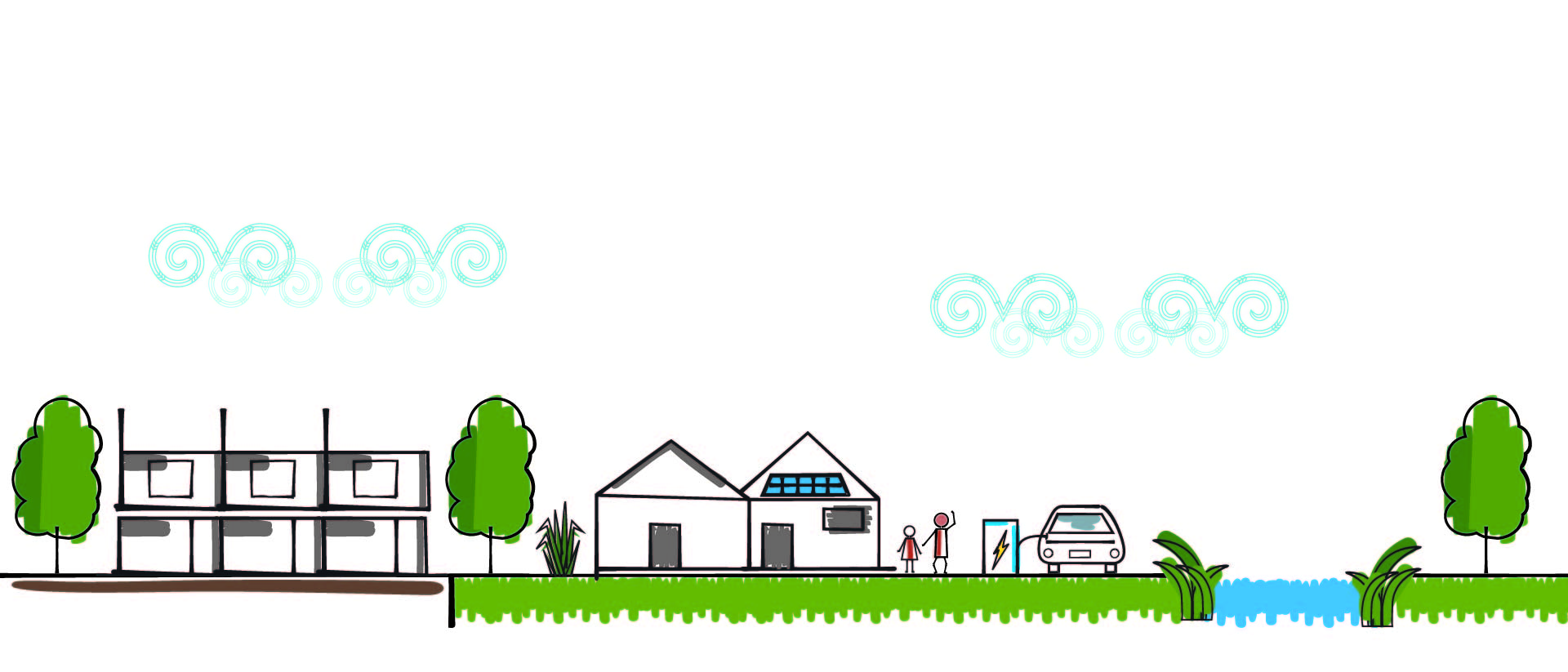Why this is a priority
How and where Auckland grows and how our existing and future built environment performs and functions, are critical factors in determining the success of our climate goals.
Our built environment includes:
- the buildings where we live, work and learn
- the
infrastructure systems that enable the region to function
- the urban spaces that shape our city.
The decisions we make when planning and designing our built environment determine to what extent we lock in future
emissions and our exposure to
climate risks.
To move to a low carbon and resilient region, climate change and hazard risks need to be integral to the planning system that shapes Auckland.
Integrating land-use and transport planning is vital to reduce the need for private vehicle travel and to ensure housing and employment growth areas are connected to efficient, low carbon transport systems.
Our built environment includes the buildings we live, work and learn in, the infrastructure systems that enable the region to function, and the urban spaces that shape our city.
Around 1.66 million people currently live in Auckland; by 2050 this number could grow by another 720,000 people to reach 2.4 million.
To accommodate this growth Auckland’s built environment will change significantly. This could mean 313,000 new homes, along with new infrastructure, commercial buildings and community facilities.

Performance of buildings
Operational energy use in residential and commercial buildings accounts for over 10 per cent of Auckland’s total emissions.
The performance of new and existing buildings needs to significantly improve to support a low carbon, climate resilient future. The energy performance of Auckland’s buildings is generally low, due to the Building Code setting relatively low energy efficiency standards. The performance of buildings is strongly linked to our health and wellbeing outcomes.
Cold, damp homes contribute towards high levels of respiratory illness, such as asthma and rheumatic fever. At the other end of the scale, the number of hot days is expected to increase, with overheating in poorly performing buildings set to become a more significant health issue.
Almost one quarter (23 per cent) of Auckland’s buildings are exposed to flood hazards. With climate change set to increase the severity and frequency of flooding, it is essential that we plan, manage and
retrofit our built environment to be resilient to impacts of climate change and other natural hazards.
Management and design of infrastructure and buildings
Climate change must be a key consideration in the management of existing infrastructure and the planning and design of new infrastructure systems. Infrastructure can lock in long-term
climate impacts and influence people’s lifestyles and choices for many decades.
Understanding the climate and natural hazard risks relevant to infrastructure systems, and how we use and maintain them, is fundamental to enhancing resilience and reducing long-term costs.
We need to consider the lifecycle impacts of buildings and infrastructure from design to deconstruction and support a
circular economy that re-uses resources and diverts construction waste from landfill.
Construction and demolition waste currently account for 50 per cent of Auckland’s total waste stream and this figure is projected to grow.
The embodied
emissions of construction materials need to be addressed through:
- re-using materials
- reducing construction and demolition waste
- using construction materials with low embodied emissions, such as structural timber.
Creating low carbon, climate resilient places
Creating places that support low carbon lifestyles and enable people to be resilient to the impacts of climate change is an essential component of delivering a sustainable built environment.
Places provide additional opportunities for climate action that go beyond those provided by buildings and infrastructure.
Neighbourhoods or precincts can provide an appropriate scale to deliver climate action that can be replicated and rapidly scaled up. For example, delivering
a zero emissions area in the city centre will reduce emissions and improve air quality. It will also encourage a rapid transition to low/zero emission vehicles and transport modes.
Zero emissions area in the city centre, will be delivered as part of the mayor’s commitment to the
C40 Green and Healthy Streets (initially known as Fossil Fuel Free Streets) declaration.
Our public spaces, from urban spaces and streets to local and regional parks, can support the transition to a low carbon, climate resilient region.
Optimising the use of public spaces delivers multi-functional benefits including:
- connected communities
- enhanced water management
- reduction of the
urban heat island effect to enhance resilience, food growing and energy generation.
Read about roles and partnerships to deliver our actions and the indicators that track our progress for the built environment priority.
